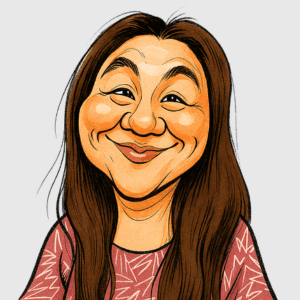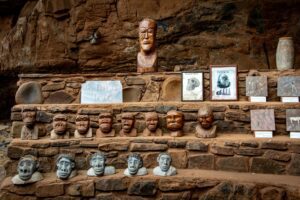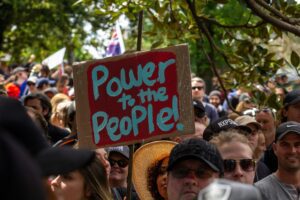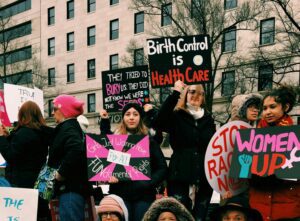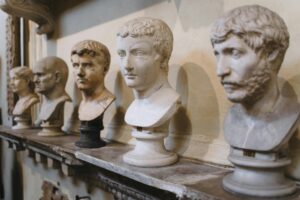Black Americans have been fighting for civil rights and fair treatment since the 1950s. It didn’t start with the #BlackLivesMatter campaign in 2013.
In the 1950s, Black Americans who felt hurt, devalued, and dehumanized by their very own country started what we now call the Civil Rights Movement.
But they wanted to fight for their rights peacefully, so non-violent protests in the form of boycotts, marches, and speeches were done.
It was some police officers who responded violently to the movement.
Why Black Americans Were Discriminated Against
I figured I should start this article with this information: Why did many people discriminate against Black Americans?
Many Black Americans were descendants of enslaved Africans, who were brought to the United States during the transatlantic slave trade.
The transatlantic slave trade spanned roughly four centuries, from the 15th century to the late 19th century.
But back then, the area that is now the United States was called the Thirteen Colonies, under British rule until the 1776 Declaration of Independence.
When European powers needed labor to grow crops in these colonies, they established coastal trading posts in Africa and purchased slaves from African intermediaries, who were often in local conflicts or raids.
Fast forward to the time when slavery was abolished in 1865: The slaves brought by European colonizers became part of American society.
But not as equals.
Abraham Lincoln and the Emancipation Proclamation
In 1863, Abraham Lincoln ended slavery in the Confederate states when he issued the Emancipation Proclamation.
He saw it as a military necessity and a moral imperative during the American Civil War, which we discuss in another article.
During the American Civil War, the Confederate states were 11 Southern states that seceded from the Union between 1860 and 1861 to preserve slavery and assert states’ rights.
It didn’t immediately free all enslaved Black Americans, but it eventually led to the ratification of the 13th Amendment, which abolished slavery in 1865.
Jim Crow Laws Separated Black and White Americans
Jim Crow Laws were a collection of state and local laws in the Southern United States that enforced racial separation in every public facility.
The idea was to keep Black and White Americans “separate but equal.” But in reality, facilities for Black Americans were almost always inferior.
They reduced them to second-class citizens and made everyday life a constant reminder of systemic inequality.
These laws remained in place from the late 1870s until the mid-20th century.
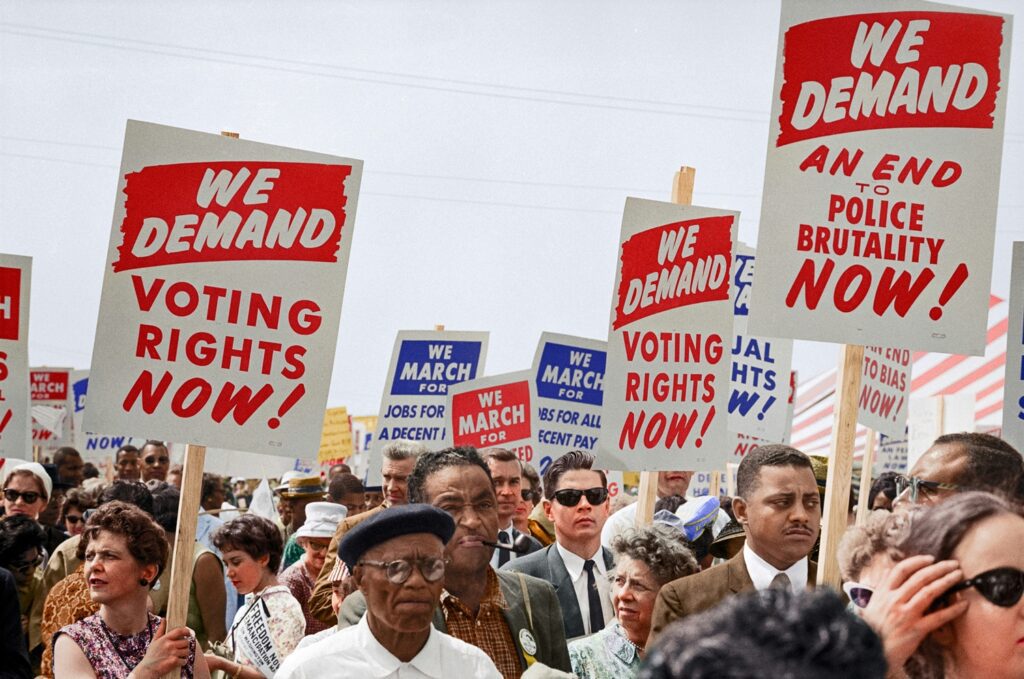
Civil Rights Movement and the Fight Against Racial Discrimination
After the Second World War, a generation of Black Americans who had fought for freedom abroad came home only to be denied their own rights.
The United States became more powerful than Europe after the Second World War, but it became the most powerful globally when the Soviet Union collapsed during the Cold War.
That contradiction pushed many to fight back. Churches, college students, and community leaders began organizing on a national scale.
It marked the beginning of the Civil Rights Movement. They stood up against injustice and demanded equal treatment as full citizens.
Non-violent Protests During the Civil Rights Movement
Civil rights activists in the United States believed that peaceful resistance would force the public, and the world, to see how cruel racism was.
Below are the non-violent protests during the Civil Rights Movement.
Montgomery Bus Boycott
Back then, Black Americans could only sit in the back of the bus. But if it filled up, they must give up their seat to a White passenger.
In 1955, Rosa Parks, who was then a resident of Montgomery, Alabama, refused to give up her seat to a White man. Then, she was arrested.
It angered the other Black residents of her town, so they refused to ride city buses. It crippled the system financially.
Eventually, the Supreme Court ruled bus segregation unconstitutional.
Sit-in Movement
The sit-in movement in 1960 involved four Black college students in Greensboro, North Carolina, who sat at a segregated lunch counter and politely asked to be served.
They were denied service but refused to leave.
Soon, sit-ins spread across the country. These exposed the absurdity and cruelty of segregation and inspired young people to join the movement.
Birmingham Campaign
In 1963, civil rights activists targeted Birmingham, Alabama, one of the most segregated cities in the South.
The campaign included sit-ins, marches, and boycotts. Police used dogs and firehoses as a response.
Graphic news footage shocked many and galvanized support for civil rights.
March on Washington
In August of 1963, over 250,000 people gathered in Washington, D.C., to demand civil and economic rights. It was there that Martin Luther King Jr. delivered his iconic I Have a Dream speech.
The march was a massive, peaceful demonstration that showed just how united the Civil Rights Movement had become.
Over 250,000 people participated in the march, demanding civil rights, jobs, and equality for Black Americans.
It also pushed Congress toward passing the Civil Rights Act of 1964.
Selma to Montgomery Marches
In 1965, activists marched 54 miles from Selma to Montgomery, Alabama, to protest the systematic denial of voting rights to Black Americans.
The first march, “Bloody Sunday,” was met with violent resistance from state troopers. After two more attempts, they finally reached Montgomery.

Laws Passed During the Civil Rights Movement
These laws were huge wins. Each one chipped away at unfair systems and set new standards for civil rights in the United States.
Civil Rights Act of 1964
The Civil Rights Act of 1964 outlawed discrimination based on race, color, religion, sex, or national origin.
It ended segregation in public places and banned employment discrimination.
Voting Rights Act of 1965
The Voting Rights Act of 1965 aimed to overcome legal barriers that prevented Black Americans from exercising their right to vote, especially in the South.
It banned literacy tests and allowed federal oversight of voter registration. It was a direct response to the violence and activism in Selma.
Fair Housing Act of 1968
The Fair Housing Act of 1968 prohibited discrimination in the sale, rental, or financing of housing based on race, religion, or national origin.
It was passed shortly after Martin Luther King Jr. was assassinated.
Notable People in the Civil Rights Movement
These people had a huge impact during the Civil Rights Movement.
Claudette Colvin
Before Rosa Parks was Claudette Colvin. When she was 15 years old, she didn’t give up her seat on a Montgomery bus to a White man.
Her story wasn’t used as the face of the movement, but she was a plaintiff in the legal case that eventually struck down bus segregation.
Rosa Parks
Rosa Parks is considered the Mother of the Civil Rights Movement. I talked about her story earlier, regarding the Montgomery Bus Boycott.
NAACP stands for National Association for the Advancement of Colored People. It fights for civil rights and equality for Black Americans through legal action, advocacy, and education.
She had a long history of activism and was part of the NAACP, so when she stood up for herself on that bus, she knew what she was doing.
Martin Luther King Jr.
Martin Luther King Jr. shaped the course of American history through his powerful speeches and commitment to non-violence.
He dreamed of an America where people would be judged by their character, not their skin color. Read his I Have a Dream speech here.
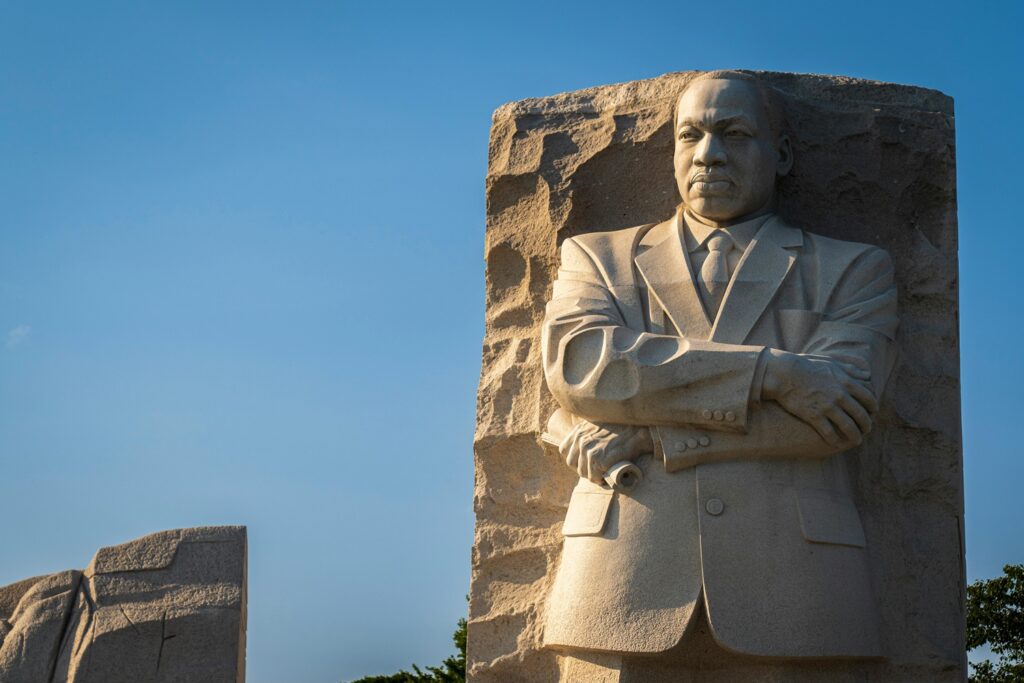
Ruby Bridges
Ruby Bridges became the first Black child to desegregate an all-White elementary school in Louisiana, at only six years old!
She faced mobs of angry protestors every day but kept walking.
Carter Woodson
Known as the Father of Black History, Carter Woodson founded the Association for the Study of African American Life and History.
He also launched what would become Black History Month. His work ensured that Black voices and achievements would not be forgotten.
Black Americans in the 21st Century
Because of the Civil Rights Movement, Black Americans have achieved milestones once thought impossible.
For one, Barack Obama was elected the president of the United States in 2009.
However, discrimination and systemic inequalities still exist, especially for the underprivileged Blacks. So, the fight continues.


